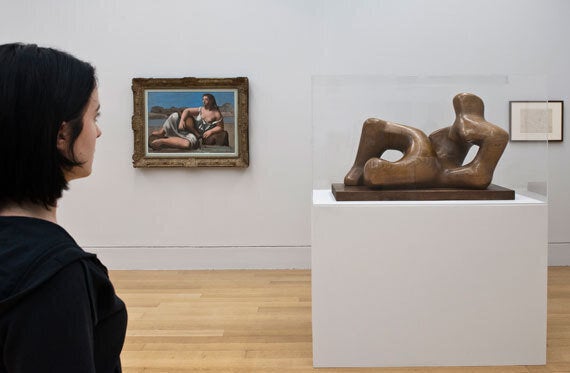
It's a good job art isn’t a particularly tribal pursuit, or Picasso and British Modern Art would be a pretty devastating show for the British public.
This is a fantastic chance to see some landmark paintings by the undisputable master of modern art and get a feel for the astonishing depth of his influence over his peers. Just leave any sense of patriotism at home.
With a few notable exceptions, it’s a study of how a succession of our national artists reacted to Pablo Picasso’s genius with everything from sycophancy to self-conscious antagonism but rarely, oh so very rarely, artwork that matched him in whichever modern style he was busy inventing.
What’s worse, it tells the tale of how British art institutions were painfully slow in recognising Picasso had any talent at all. The first room of the exhibition, which covers his panned debut London show in 1910, features a quote from GK Chesterton who described one of his drawings as ‘a piece of paper [Picasso] has had the misfortune to upset the ink and tried to dry it with his boot'. His reputation with British critics doesn’t much improve until he finally enjoys a blockbuster show at the Tate Gallery – fifty years later, in 1960.
Tracing the events in between, we first see how Picasso inspired Duncan Grant to hero-worship (1913’s The Tube owing a huge debt to Vase Of Flowers, 1908) and Wyndham Lewis to sneer at the Spaniard both in print and paint.
A Reading of Ovid, Lewis’s portrait of two seedy, big-faced men, sought to satirise Picasso’s neoclassical tendencies, something that apparently offended the self-anointed leader of Britain’s avant-garde. As an opening room, it’s a clever one, surmising the two basic British responses to Picasso throughout the period.
An outstanding central room of Picassos dispenses of the comparisons for a moment and allows us instead to bask in the remarkable versatility of his brush, from the cubist mandolins to the tender works of impressionism like A Child With A Dove (1901).
Sometimes, the show’s conceit gets in the way of our enjoyment of it – there are a few too many dull lending and buying details next to the paintings, a shame when a little analysis can do so much to bring Picasso’s work to life for the uninitiated.

Nude Woman In A Red Armchair (1932)
But a wonderful sequence of Picasso’s portraits of Marie-Therese Walter, his secret lover, are a real highlight, ranging from the duel profile portrait of Head Of A Woman (1926) to Nude Woman In A Red Armchair (1932), a painting that seems to burst with equal parts love and lust.
The second part of the show is far stronger than the first. A room of Henry Moore sculptures cleverly aligns Picasso’s The Source (1921) next to Moore’s Reclining Figure (1936), causing the seemingly endless reach of Picasso’s influence to dawn on you anew.

The Source hanging next to Reclining Figure
Francis Bacon, who was inspired to paint in the first place after seeing Picasso’s Dinard series, takes the show into far darker territory with Three Studies for Figures at the Base of Cruxcifiction. Along with Moore, it is one of the few sets of works that impresses as much as the star of the show.
As the show ends, we see how, finally, Picasso is accepted by the artistic elite in Britain - not to mention the public who flocked to his 1960 retrospective in their hundreds of thousands. But it is perhaps the final British artist room that is the most indicative.
David Hockney, himself the subject of a current blockbuster show just a few miles away at the Royal Academy, visited Picasso’s show several times as a student. Here we see the sweet if somewhat childish homages he painted to his hero, an almost touching portrayal of a master being mimicked. Given Hockney's status today it’s a fitting end to a show that, if it were anything like sport, would be akin to seeing the national team dismantled by Spanish flair at a World Cup.
Picasso and Modern British Art runs at the Tate Britain between 15 Feb and 15 July.
